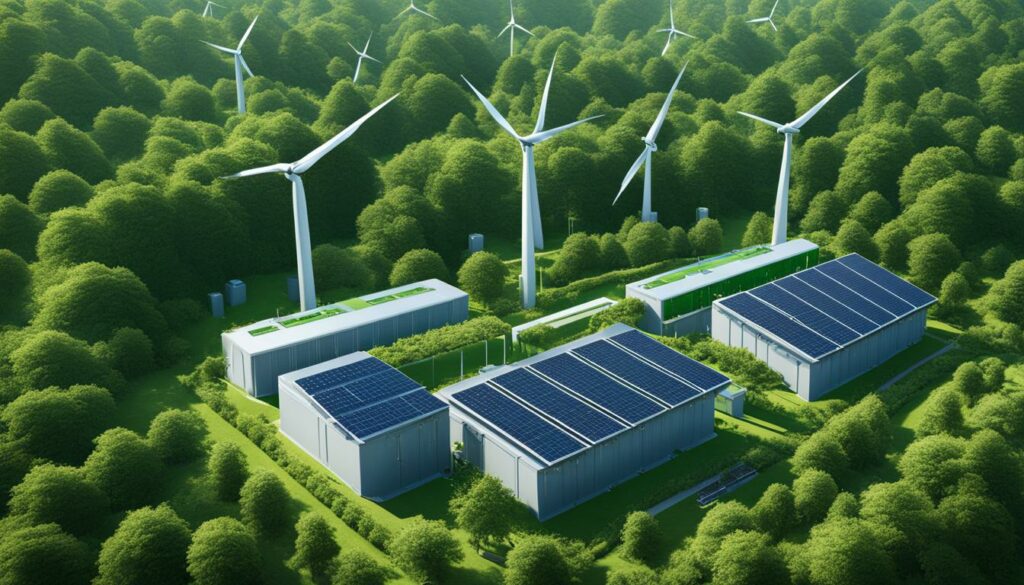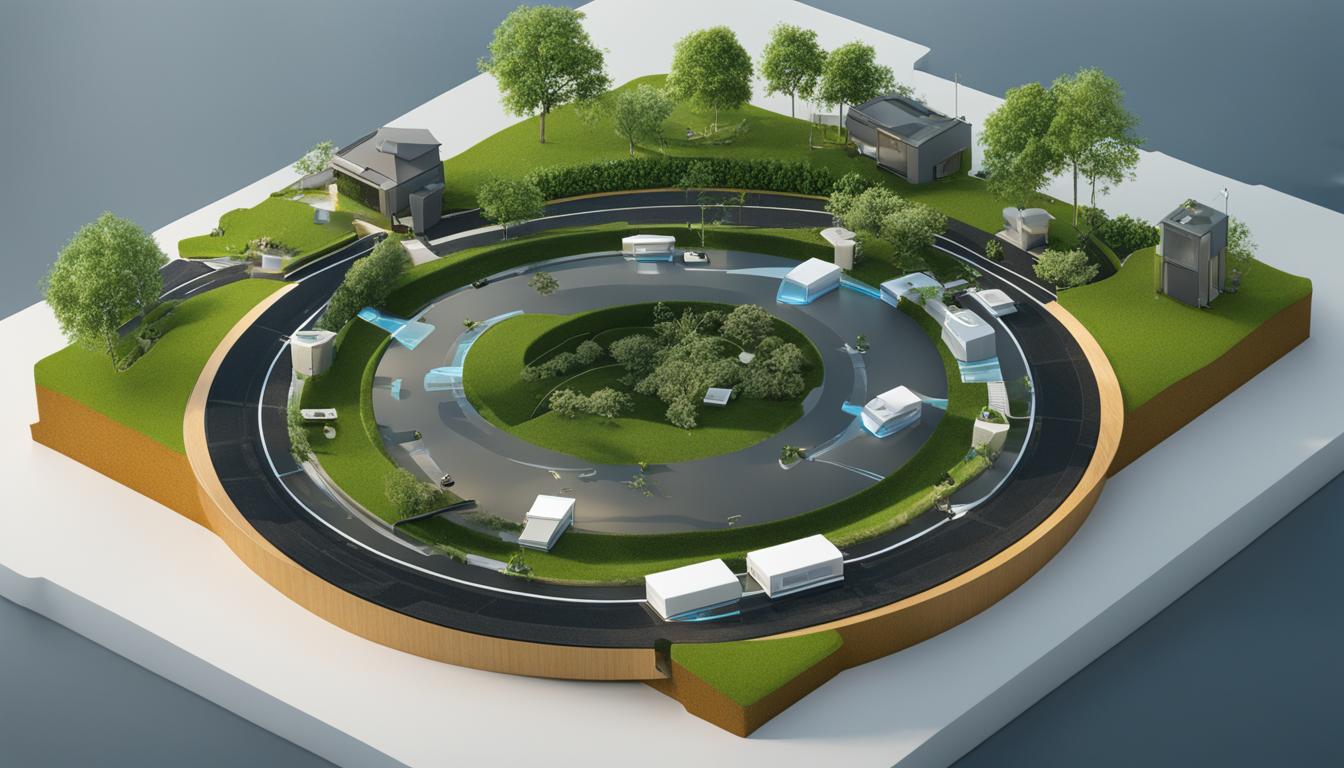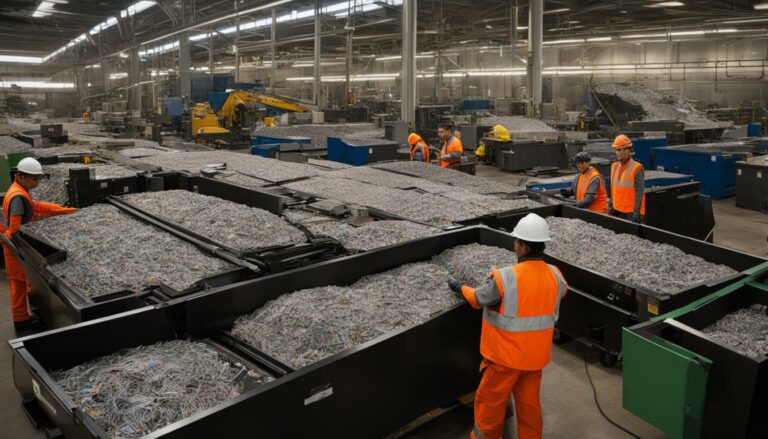Building a Sustainable IT Ecosystem
The conversation around creating a sustainable IT ecosystem is gaining importance as businesses face monumental sustainability challenges. The intersection of technology and collaboration is seen as a solution to these challenges. Data sharing and cooperation are essential for tracking and reporting on emissions, and several companies, including EY, Microsoft, IBM, and ServiceNow, are collaborating to help organisations reduce emissions and improve operational efficiencies. Interoperability and data sharing are crucial but remain a major challenge due to increasing data amounts, cybercrime, and data privacy concerns.
Key Takeaways:
- Sustainable IT ecosystem is vital for businesses facing sustainability challenges.
- Data sharing and cooperation are necessary for tracking emissions.
- Collaboration between companies can help reduce emissions and improve efficiencies.
- Interoperability and data sharing pose challenges due to increasing data amounts and cybersecurity risks.
- Addressing these challenges requires a holistic approach that combines technology and sustainability.
The Environmental Impact of the Internet
The internet has become an integral part of our daily lives, but its exponential growth has also come with environmental consequences. With the internet currently consuming around 10% of the world’s electricity, efforts must be made to address its energy consumption and reduce its carbon footprint. While tech giants like Facebook, Google, and Apple have made commitments to using 100% renewable energy, there is still a need to focus on the energy usage of the online infrastructure.
Despite the reduced energy consumption in other areas due to remote working during the pandemic, the internet’s energy usage continues to rise. By 2025, it is projected to consume up to 20% of the world’s electricity. To mitigate this impact, there is a pressing need to find ways to offset this energy consumption through the use of renewable energy sources and increased efficiency.
By investing in renewable energy and adopting carbon-neutral computing practices, the internet can become more sustainable. This involves utilizing solar or wind power to generate electricity, implementing energy-efficient data centers, and optimizing the performance of online platforms that consume large amounts of energy. Moreover, raising awareness among internet users about the environmental impact of their online activities can also contribute to a more sustainable internet ecosystem.
The Importance of Carbon-Neutral Computing
Carbon-neutral computing is a key component in reducing the environmental impact of the internet. It involves minimizing the emissions of greenhouse gases associated with the entire lifecycle of computing, including the manufacturing, operation, and disposal of devices and infrastructure. Companies can achieve carbon-neutral computing by offsetting their emissions through activities such as investing in renewable energy projects or purchasing carbon credits.
“The internet’s energy consumption continues to rise, and addressing its environmental impact is crucial for a sustainable future.”
| Key Actions for a Sustainable Internet | Benefits |
|---|---|
| Investing in renewable energy sources | – Reduces reliance on fossil fuels – Lowers carbon emissions – Ensures a cleaner energy supply for the internet |
| Improving energy efficiency in data centers | – Reduces overall energy consumption – Lowers operational costs – Minimizes carbon footprint |
| Raising awareness and promoting sustainable digital habits | – Encourages responsible internet use – Inspires individuals and organizations to adopt sustainable practices |
In conclusion, the environmental impact of the internet is a pressing concern that requires collective action from individuals, companies, and policymakers. By investing in renewable energy, embracing carbon-neutral computing practices, and raising awareness about sustainable digital habits, we can work towards creating a more environmentally friendly and sustainable internet ecosystem.
Designing Sustainable Websites
Creating sustainable websites is an essential part of building a sustainable IT ecosystem. By implementing sustainable IT practices and utilizing green IT solutions, web design and development teams can minimize the environmental impact of their websites while still delivering optimal performance.
One crucial aspect of designing sustainable websites is optimizing website performance. Websites that load quickly and efficiently not only provide a better user experience but also have a lower environmental impact. This can be achieved by using tools like Google’s page speed insight and lighthouse to analyze and improve website performance. Additionally, adhering to web accessibility standards, optimizing image sizes, avoiding large fonts and unnecessary elements, and utilizing content delivery networks (CDN) can all contribute to improved website performance and reduced energy consumption.
Another important consideration in designing sustainable websites is content management. Regularly auditing and reducing website content not only helps streamline the user experience but also reduces energy consumption. By minimizing unnecessary data and optimizing content delivery, websites can operate more efficiently and effectively contribute to a sustainable IT ecosystem.
Benefits of Designing Sustainable Websites
Designing sustainable websites not only contributes to environmental conservation but also provides several benefits for businesses and users. Sustainable websites that load quickly and perform well on low-powered devices enhance user experience and improve user satisfaction. This can lead to increased user engagement, longer browsing sessions, and ultimately higher conversion rates. Furthermore, sustainable websites send a strong message to users and stakeholders, demonstrating a commitment to sustainability and social responsibility.
By incorporating sustainable IT practices and implementing green IT solutions, web design and development teams can play a vital role in building a more environmentally friendly IT industry. Designing sustainable websites is a crucial step towards achieving a sustainable IT ecosystem, and organizations that prioritize sustainability in their digital presence contribute to a greener future.
| Key Aspects of Designing Sustainable Websites | Benefits |
|---|---|
| Optimizing website performance | – Improved user experience – Reduced energy consumption |
| Auditing and reducing website content | – Streamlined user experience – Reduced energy consumption |
| Commitment to sustainability | – Positive brand image – Increased user engagement |
Selecting Green Hosting Providers
When it comes to building a sustainable IT ecosystem, selecting the right hosting provider is crucial. Green hosting providers that prioritize renewable energy sources and have a strong commitment to sustainability can significantly reduce the environmental impact of websites and digital platforms. By choosing a hosting provider that aligns with green computing practices, organizations can contribute to a more environmentally friendly IT industry.
When evaluating hosting providers, it’s essential to look for clear and accessible information about their green credentials and the energy sources powering their data centers. A reliable green hosting provider should provide transparency about their renewable energy usage and any certifications they have obtained. This information helps businesses make informed decisions and ensures that their digital infrastructure operates in line with sustainable criteria.
Additionally, organizations with multiple digital platforms, such as CRM platforms, learning and development platforms, and digital workspaces, should ensure that all aspects of their digital estate align with sustainability goals. This holistic approach ensures that the entire IT ecosystem operates sustainably, reducing energy consumption and minimizing the overall environmental impact.
Benefits of Selecting Green Hosting Providers
Choosing a green hosting provider offers several benefits beyond environmental sustainability. Here are some key advantages:
- Reduced carbon footprint: By choosing a hosting provider that relies on renewable energy sources, businesses can significantly reduce their carbon footprint.
- Enhanced reputation: Demonstrating a commitment to sustainability through green hosting can enhance an organization’s reputation and attract environmentally conscious customers and partners.
- Cost savings: Green hosting providers often offer energy-efficient infrastructure, leading to lower energy costs for businesses in the long run.
- Regulatory compliance: As sustainability regulations become more stringent, selecting a green hosting provider helps businesses comply with environmental standards and avoid potential penalties.
By prioritizing the selection of green hosting providers, organizations can contribute to a more sustainable IT ecosystem while enjoying the multiple benefits that come with it.
| Green Hosting Provider | Renewable Energy Usage | Accreditations |
|---|---|---|
| Provider A | 100% renewable energy | Green Energy Certification, Sustainable Hosting Award |
| Provider B | 70% renewable energy | Renewable Energy Certificate |
| Provider C | 50% renewable energy | Environmental Sustainability Seal |
The table above showcases a comparison of three green hosting providers and their renewable energy usage, as well as any accreditations they have obtained. It highlights the importance of considering not only the renewable energy percentage but also the certifications and awards received by the hosting providers. Organizations can use this information as a starting point to evaluate and select the most suitable green hosting provider for their specific needs and sustainability goals.

Conclusion
Building a sustainable IT ecosystem requires a holistic approach that combines technology and sustainability. By addressing the environmental impact of the internet, designing sustainable websites, and selecting green hosting providers, organizations can contribute to a more eco-friendly and environmentally friendly IT industry.
Integrating sustainable IT practices, such as green computing and the use of renewable energy in technology, is crucial for driving businesses forward responsibly. It is essential for businesses, designers, developers, and policymakers to work together to create a greener future.
By adopting green IT solutions and utilizing carbon-neutral computing, organizations can reduce their environmental footprint and contribute to a more sustainable IT ecosystem. This not only benefits the planet but also improves operational efficiencies and enhances the overall user experience.
In conclusion, the path to a sustainable IT ecosystem lies in embracing eco-friendly technology, implementing green computing practices, and leveraging renewable energy sources. Let us strive towards a future where technology and environmental consciousness go hand in hand, creating a better and more sustainable world.
FAQ
What is a sustainable IT ecosystem?
A sustainable IT ecosystem refers to the practice of integrating eco-friendly technology, green computing practices, and renewable energy sources in the IT industry to minimize environmental impact and promote sustainability.
Why is addressing the environmental impact of the internet important?
The internet consumes a significant amount of energy, and its consumption is projected to increase. Addressing its environmental impact is crucial to reduce carbon emissions and promote sustainable technology use.
How can web design contribute to a sustainable IT ecosystem?
Web design can contribute to a sustainable IT ecosystem by optimizing website performance, adhering to web accessibility standards, reducing unnecessary elements, and using content delivery networks (CDN) to minimize energy consumption.
What role does the choice of hosting provider play in building a sustainable IT ecosystem?
The choice of hosting provider is important as it determines the energy consumption of a website. Selecting hosting providers that use renewable energy sources and have a commitment to sustainability can help promote a greener IT industry.
How can organizations ensure all aspects of their digital estate align with sustainable criteria?
Organizations can ensure sustainability by selecting green hosting providers and ensuring their digital platforms, such as CRM platforms, learning and development platforms, and digital workspaces, meet sustainable criteria.












